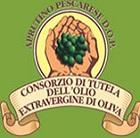
|
||||||||||||||||||||||||||||||||||||||||||||||||
|
|
L'Aquila Province
The province of L'Aquila, the largest of the four provinces of Abruzzi, is the only one with no access to the sea. Just because of its dimensions, it presents a great variety of customs and traditions, history and dialects, but there is always an underlying thread running through them. Because of such diversity, the two main centres of the zone, Avezzano and Sulmona, have been willing to become independent provinces for a long time.
The province is in the heart of Abruzzi, surrounded by the province of Teramo (north), Pescara and Chieti (east), Molise (south-east) and Lazio (west). The Province includes the highest mountains of the Apennines (Gran Sasso, Maiella and Velino-Sirente), their highest peak, Corno Grande, the high plain of Campo Imperatore, and Europe's southernmost glacier, the Calderone. The territory is the most mountainous of the region and the most absorbed in its charming landscapes, plunged into the silence of its cities and picturesque villages clinging on mountains or lying on tablelands and valleys. The visitor is enchanted by a succession of images changing with the natural surroundings. Perched at an elevation of 1,460 metres (4,790 ft) is Rocca Calascio, the highest fortress in the Apennines. Built of stone and masonry exclusively for military purposes and intended only to accommodate troops and never as residence for nobles, the fortress overlooks the Plain of Navelli at one of the highest points in the ancient Barony of Carapelle. Rocca Calascio was the location for the final scene of Richard Donner film Ladyhawke.
Near the fortress, at a slightly lower elevation, is Santa Maria della Pietà, an octagonal church built in the seventeenth century.
Below is a view of Campo Imperatore, Abruzzo's largest & highest Alpine meadow with its Observatory. A must see for nature lovers, stargazers and photographers.
The history of the province is the history of the region, except for its peculiar religious life of the 15th century, when the first Franciscan Saints appeared in l'Aquila. The province's major rivers are the Aterno-Pescara, Sangro, Liri, Salto, and the Turano; its major lakes are Lago Scanno and Lago Barrea. It once included the largest lake on the Italian peninsula, Lago Fucino, which was drained in one of the 19th century's largest engineering projects. The lake basin is today a flourishing agricultural area and an important technological district.
Among the 108 communes of the province,13 are mentioned among the "Most beautiful villages in Italy": Castel di Monte and Navelli are just two of them.
Besides the Abruzzo National Park, the province boasts several natural treasures such as part of the Maiella National Park, with Mount Amaro (2.795 m), the second highest mountain of the Apennine, and the Sirente-Velino Regional Park, with the Aterno river, regarded as the coldest in Italy.
Finally, there is the "Zompo lo Schioppo" Natural Reserve, with the most suggestive waterfall of the Apennine . The city of L'Aquila, also known as the Florence of Abruzzi or the Salzburg of Italy, is determined to quickly recover from the 2009 earthquake: securing and restoration of buildings and monuments started immediately after the tragedy. Sulmona, hometown of the Latin poet Ovidio, is very rich in monuments and works of art. It has also a thriving handicrafts industry and it is well-known for its typical confetti (sugared almond confections).
Castel di Sangro, on the southern border of the province, is dominated by the Collegiata dell'Assunta, a little 13th century architectonic jewel with two portals, a Renaissance one and Romanesque one. Tagliacotto, on the slopes of Mount Bove, is well-known for its ancient noble residences.
The province of L'Aquila attracts tourists from all over the world thanks to its landscapes and artistic beauties. The province is known for its many castles, fortresses and pristine medieval hill towns.Those who love nature can't miss a visit to the Abruzzo, Lazio and Molise National Park to discover the different animal species saved from extinction: the Apennine wolf, the Abruzzi chamois – the so-called Rupricapra Ornata, considered the most beautiful in the world – and the Marsica brown bear. This is a real paradise for those who love photography.
The most common sport is skiing, both cross-country and downhill skiing. Campo di Giove, Campo Felice, Campo Imperatore, Ovindoli and Scanno are the most famous ski runs.
Thanks to its dimensions and richness, the province of L'Aquila is the perfect destination for trekking, jogging and horseriding. Many tourists love to ride a bicycle or a mountain bike along the valleys and slopes of the countryside. Experts scour the woods searching for epigeal mushrooms and truffles cooked on the spot.
The typical products of L'Aquila have a rural flavour, such as the white and summer scorsone truffle and pork sausages. A traditional dish is the lamb incaporchiato (covered). In the past people ate meat only on special occasions, so farmers cooked the lamb in a pot covered by another pot and without spices or aromatic herbs: it did not smell so they did not arouse people's curiosity. Times have changed, but this is still a traditional recipe.
The mountains | Beaches and coasts | Provinces | Teramo | Pescara | Chieti | L'Aquila | Cities : Teramo | Pescara | Chieti | L'Aquila |
|

|
||||||||||||||||||||||||||||||||||||||||||||||
|
||||||||||||||||||||||||||||||||||||||||||||||||

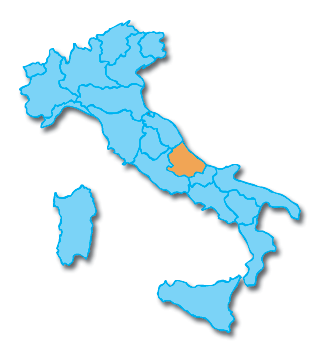

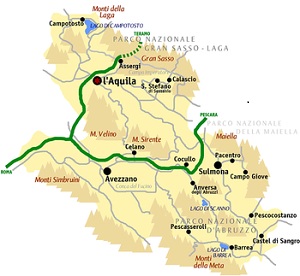
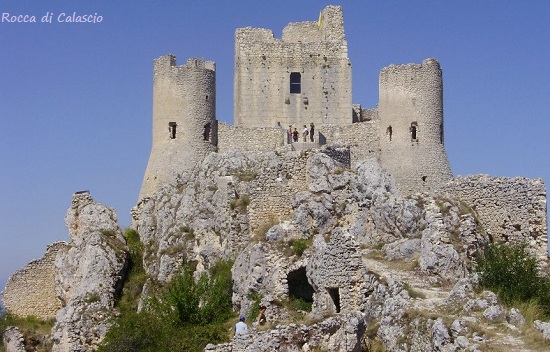
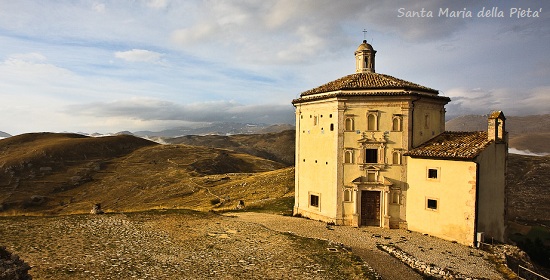

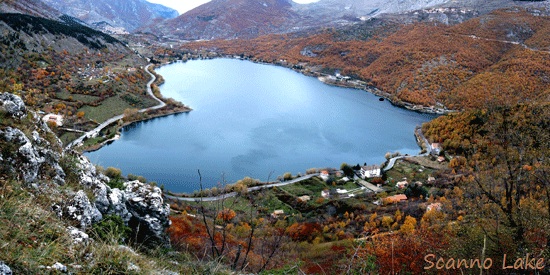

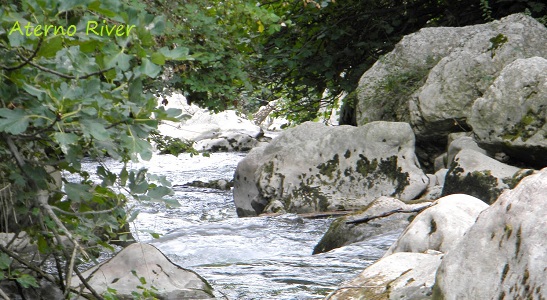
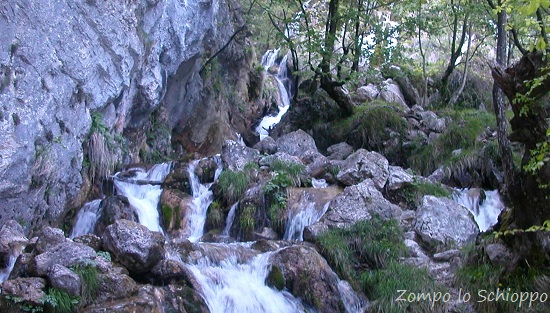
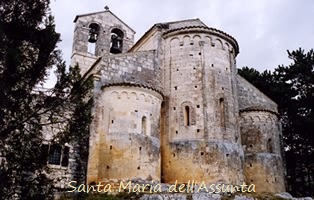 Here you find ruins of ancient pagan temples together with Roman settlements reflecting the religious traditions of the land, such as the many Benedictine monumental complexes of the Romanesque age: the S.Pietro Church in Alba Fucense, built on the ruins of a pagan temple and with its characteristic 13th century mosaics; the S. Maria in valle Porclaneta Church in Rosciolo, at the foot of Mount Velino; the S.Maria and S. Pellegrino monumental complex in Bominaco, on the tableland of Navelli. The Cathedral of S. Pelino in Corfino is also sightworthy.
Here you find ruins of ancient pagan temples together with Roman settlements reflecting the religious traditions of the land, such as the many Benedictine monumental complexes of the Romanesque age: the S.Pietro Church in Alba Fucense, built on the ruins of a pagan temple and with its characteristic 13th century mosaics; the S. Maria in valle Porclaneta Church in Rosciolo, at the foot of Mount Velino; the S.Maria and S. Pellegrino monumental complex in Bominaco, on the tableland of Navelli. The Cathedral of S. Pelino in Corfino is also sightworthy. 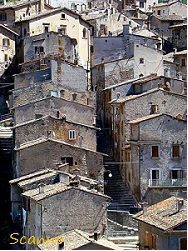 The beauty of art perfectly merges into the beauty of valleys, mountains and tablelands. Don't miss the tablelands of Campo Imperatore del Gran Sasso, a few kilometers from L'Aquila, and the tableland of Velino-Sirente. Finally, the town of Scanno is really sightworthy, with its lake and the famous Sagittario and Aterno gorges.
The beauty of art perfectly merges into the beauty of valleys, mountains and tablelands. Don't miss the tablelands of Campo Imperatore del Gran Sasso, a few kilometers from L'Aquila, and the tableland of Velino-Sirente. Finally, the town of Scanno is really sightworthy, with its lake and the famous Sagittario and Aterno gorges.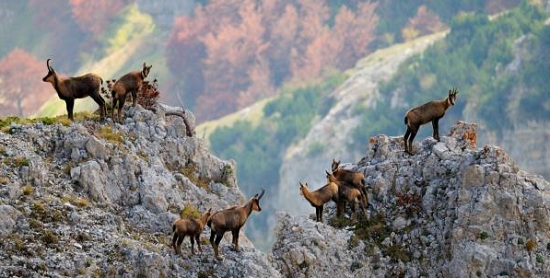
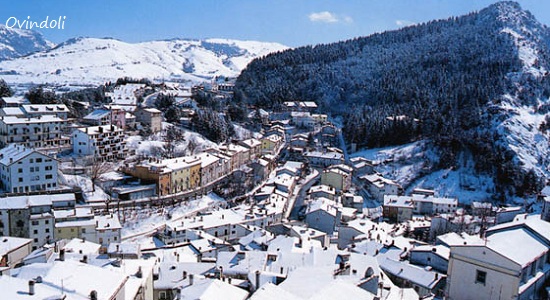

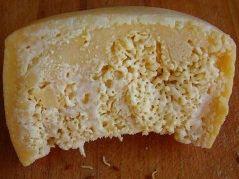 One of the basis of the traditional cooking is cheese, such as the pecorino cheese and the marcetto, a kind of ripe pecorino fermented with milk. Since it is not allowed to sell the marcetto in shops, you can find it only in local private houses, for family consumption
One of the basis of the traditional cooking is cheese, such as the pecorino cheese and the marcetto, a kind of ripe pecorino fermented with milk. Since it is not allowed to sell the marcetto in shops, you can find it only in local private houses, for family consumption 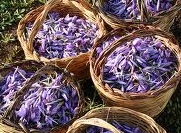 Among the most famous spices of Abruzzi, do not miss the L'Aquila's saffron. Other typical dishes of L'Aquila are: maccheroni alla chitarra, gnocchetti with cheese and eggs, roast lamb, kid, lamb with cheese and eggs.
Among the most famous spices of Abruzzi, do not miss the L'Aquila's saffron. Other typical dishes of L'Aquila are: maccheroni alla chitarra, gnocchetti with cheese and eggs, roast lamb, kid, lamb with cheese and eggs.